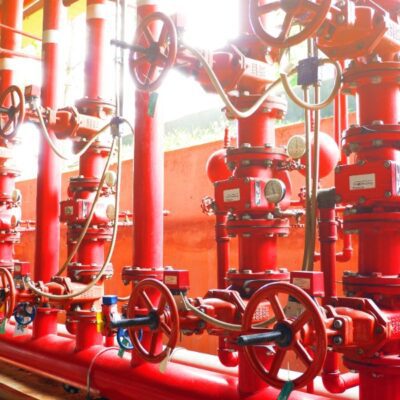Measuring and reducing your water use is critical to future-proofing your business.
In a recent article, we reviewed the many reasons organizations should care about their water use. Most companies require a reliable, high quality water supply to meet their operational needs and expansion plans. Reliable water supplies, however, are shrinking due to pollution, overconsumption, and changes in the climate. To help protect operations, delivery, and production, many companies are considering ways to conserve water and integrate its careful use into long-term strategies.
Many international brands are being requested to disclose water data to investors and customers. According to CDP, 3,909 companies, approximately a quarter of global market capitalization, disclosed water security risks, impacts, and actions for the year 2022. This is excellent but brings to light the fact that many companies have yet to begin reporting water withdrawals or their plans to reduce water use.
Integrating Water Goals with Your Sustainability Plan
While energy production and efficiency have been key sustainability metrics for the last decade, water conservation is just coming to the surface as an area of interest. Water plays a critical role in many types of businesses and organizations, from washing and manufacturing goods, to cooling and heating buildings, and meeting domestic needs.
For most industries, water is integral to business continuity and climate impact, despite the fact that only 3% of climate finance currently focuses on water systems. In tandem with the need to protect operational resilience, public perception of sustainability efforts is leading organizations to focus on water through target setting. Pressure to do so is building from within as well. According to a Gartner survey of 30,000 employed people worldwide, 87% said businesses have a responsibility to take a public position on societal issues relevant to their business.
Driven by the growing interest from regulatory bodies, shareholders, and customers, more organizations are taking a sharp look at their water use. If fact, Other organizations like the CEO Water Mandate (a UN initiative) and the Alliance for Water Stewardship also offer ways to learn about, employ and report water-use and conservation practices. Water targets and disclosures are becoming the norm, and companies who fail to report out are likely to face criticism.
Setting the Right Goal: Qualitative vs Quantitative
When working water into sustainability planning, companies are setting targets for reuse, efficiency, watershed replenishment, supply chain stewardship, and more.
Organizations primarily set two types of goals, depending on impact priorities: qualitative goals and quantitative goals.
Qualitative goals tend to be non-specific (for example, “actively reduce water usage.”) A “soft” goal helps the organization be mindful of water use and set an intent to improve processes, but may be difficult to quantify because it uses metrics based on behavior instead of data. A soft goal may be more appropriate for organizations just starting their water journey.
Quantitative goals are specific. An example may be an organization aiming to “reduce total water usage by 10% when compared to business year 2022.” This type of goal is very measurable, increasing its likelihood to make substantial impact. However, tracking progress requires accurate measurement of water use, standardization for growth, and sometimes a normalization against production or revenue. Before publicizing a quantifiable or “hard” goal, organizations must align data management systems and gather solid internal buy-in for action.
Somewhere outside of or in between the qualitative and quantitative sit watershed and replenishment-based targets. You’ve probably seen them in the news: “Google plans to be water positive by 2030” or “Amazon will return more water than it uses by 2030.” Corporations are committing to replenish more water than they consume on the path to water positive status. The concept of water neutrality or positivity is similar to what we know from emissions (i.e., Net Zero). Organizations must find an equilibrium between water consumption and what is returned to nature by reducing water use, using water more efficiently, and restoring or creating new water sources.
On the surface, these are non-specific compared to a concrete, quantitative reduction target. They do not indicate what strategies will be used or how far an organization will need to go. However, they do require specific data tracking. When created with a dual focus inside the fence line and in the broader watershed, replenishment goals have the potential to generate impact within the continuously developing market for water certifications and credits.
Setting Impactful Water Goals and Achieving Them
A thoughtful approach to goal setting is the foundation of any sustainability program. Here are five steps the experts at Coho agree can help your organization set an impactful, achievable goal:
- Understand your existing footprint: How much water do you use, where does it go, how much does it cost, how critical is a clean supply to operations, and what risks do you face?
- Identify opportunities for demand and supply side optimization: Evaluate the efficiency of your operations to discover where water can be used differently and/or where business-as-usual is still the best option.
- Conduct thorough stakeholder engagement: Connect with leadership and practitioners from across your organization to discuss priorities for improvement, limitations on infrastructure or bandwidth, previous projects, funding mechanisms, and approval processes.
- Connect ambitions to relevant metrics: Based on available data, internal interest, and level of ambition, determine whether qualitative or quantitative goals are right for you, and push the envelope of impact to further sustainability progress.
- Create a plan for long term tracking of progress: What data do you need, who collects it, and who is ultimately responsible for progress against goals? A plan to publicly report progress through CDP or a sustainability report can connect the dots between improving water resiliency for operational concerns and for public perception.
These steps are relevant whether you’re setting a qualitative or quantitative goal. Organizations should review all water uses and resources when evaluating their baseline. This will enable a more holistic view of water that encourages creative solutions. Once the target is set, you’ll need to deliver on your promises through inside the fence and watershed projects in a tailored water strategy. Leading organizations also expand their resiliency planning to suppliers once their own house is in order.
Meaningful Targets Drive Accountable Climate Action
In the face of the global climate crisis, consumers and investors are increasingly interested in corporations’ commitment to water resiliency. To set water stewardship goals, sustainability managers need to identify relevant metrics, then garner internal support and bandwidth. Everyone benefits from the transparency provided by a target.
Organizations looking to make positive impact, protect operational resiliency, and report on sustainability progress should set water targets tied to an accurate baseline assessment and a realistic action plan. Whether you’re revamping existing goals, setting a target for the first time, or just beginning to learn more about how water fits in a sustainability plan, Coho can help. We support clients in putting all the pieces together to formulate not only internal goals but achievable public-facing targets as well.


